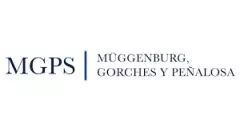- in United States
- in United States
As is generally known, on August 10, 2018, several amendments to the now repealed Industrial Property Law entered into force. It stood out the inclusion of non-traditional marks which emerged as a significant phenomenon in the field of the industrial property law in Mexico. Unlike traditional marks, which are limited to denominations, figurative elements, such as words, designs or symbols 1 , non-traditional marks encompass a variety of shapes, colors, sounds, smells and other elements that may be used to identify products or services.
The current Federal Law for the Protection of Industrial Property (LFPPI), which entered into force on November 5, 2020, in its article 171 establishes that traditional and non-traditional marks are "any sign perceptible by the senses and capable of being represented in a way that allows determining the clear and precise object of protection, which distinguishes products or services from others of the same kind or class in the market".
Moreover, according to article 172 of the above-mentioned law, the following signs may constitute a mark:
- Denominations, letters, numbers, figurative elements and combinations of colors, as well as holograms;
- Three-dimensional shapes;
- Trade names and company names or corporate names, provided that they are not included in the following article;
- The proper name of a natural person, provided that it is not confusing with a registered trademark or a published trade name;
- Sounds;
- Smells;
- The plurality of operative or image elements, including, among others, size, design, color, shape arrangement, label, packaging, decoration or any other that, when combined, distinguish products or services in the market; and
- The combination of the signs set forth in paragraphs 1 to 6 above
The scents, sounds, holograms, certification marks and trade dresses described below, as defined by the Mexican Institute of Industrial Property in its guide to distinctive signs 2 , are part of the so-called non-traditional marks.
- Olfactory mark: It is an identifying aroma, smell or fragrance: it is an odo type that is perceived by the sense of smell. The aim is for the consumer to recognize and associate a product or service with its smell.
- Sound mark: It is a sound or a composition of sounds that typically complement and is associated with the traditional visual mark, and is often perceived on the radio, also benefiting blind people. Its representation is generated in pentagrams, phonograms or, in its case, onomatopoeias.
- Holographic mark: It is a sign that is constituted by an hologram, that is to say, the creation of three-dimensional images which imprint is given through a laser beam, which records in a microscopic way a photosensitive film. Traditionally these marks are used to highlight the authenticity or quality of a certain product such as a credit card, for example.
- Certification mark: It is a sign that distinguishes products and services whose particularities or characteristics have been certified by its holder. Among them we can name the quality or processes of the products or services, the geographical origin or the conditions that were generated for the manufacture of the products or provision of the services.
- Trade dress: Refers to the variety of characteristics that differentiate products or services in the market, such as aspects related to image (e.g. size, design, color, layout, label, packaging, decoration), in addition to other elements, such as operational ones.
Non-traditional marks seek to transform. The aim is to attract consumers' attention through their senses, among others.
The Law opened the door, therefore, to the protection of these non-conventional forms and thus, keep pace with the pace of innovation in commerce. However, despite the opening of the legal framework, the registration of non-traditional marks in Mexico has faced several challenges, one of them being the lack of regulations for their registration since, to date, the Regulations of the Industrial Property Law have not been amended to regulate the registration of these marks. The distinctiveness that these signs -which are subject to the same registration prohibitions as traditional marks- must enjoy could also be challenging.
To cite examples, from the information provided by the Mexican Institute of Industrial Property itself 3 , since the inclusion of non-traditional marks in the law to date, only 49 holographic marks, 129 olfactory marks, 257 sound marks and 306 certification marks have been applied for. The number of trade dresses applied for registration/registered is much higher with a total of 5595. Even so, for illustrative purposes, the Industrial Property Gazette of a single day (specifically that of April 22, 2025) can show a total of 932 distinctive signs, being a relevant difference with the number of non-traditional trademarks
Despite the challenges, these marks offer significant opportunities for companies in Mexico in a saturated market with high competition. The ability to differentiate products and services through non-conventional elements can provide a competitive advantage in a crowded market. Companies that succeed in registering non-traditional marks can benefit from broader protection and the ability to create a unique mark identity, maximizing their value.
Undoubtedly, the market continues to develop, and non-traditional marks are likely to play an increasingly important role in adding value to products or services.
Footnotes
1 Article 172 of the Federal Law of the Protection of Industrial Property
2 https://www.gob.mx/impi/acciones-y-programas/temas-de-interes-preguntas-frecuentes-marcas
3 Information of April 23, 2025 derived from the MARCANET system of External Consultation of the Mexican Institute of Industrial Property..
The content of this article is intended to provide a general guide to the subject matter. Specialist advice should be sought about your specific circumstances.


